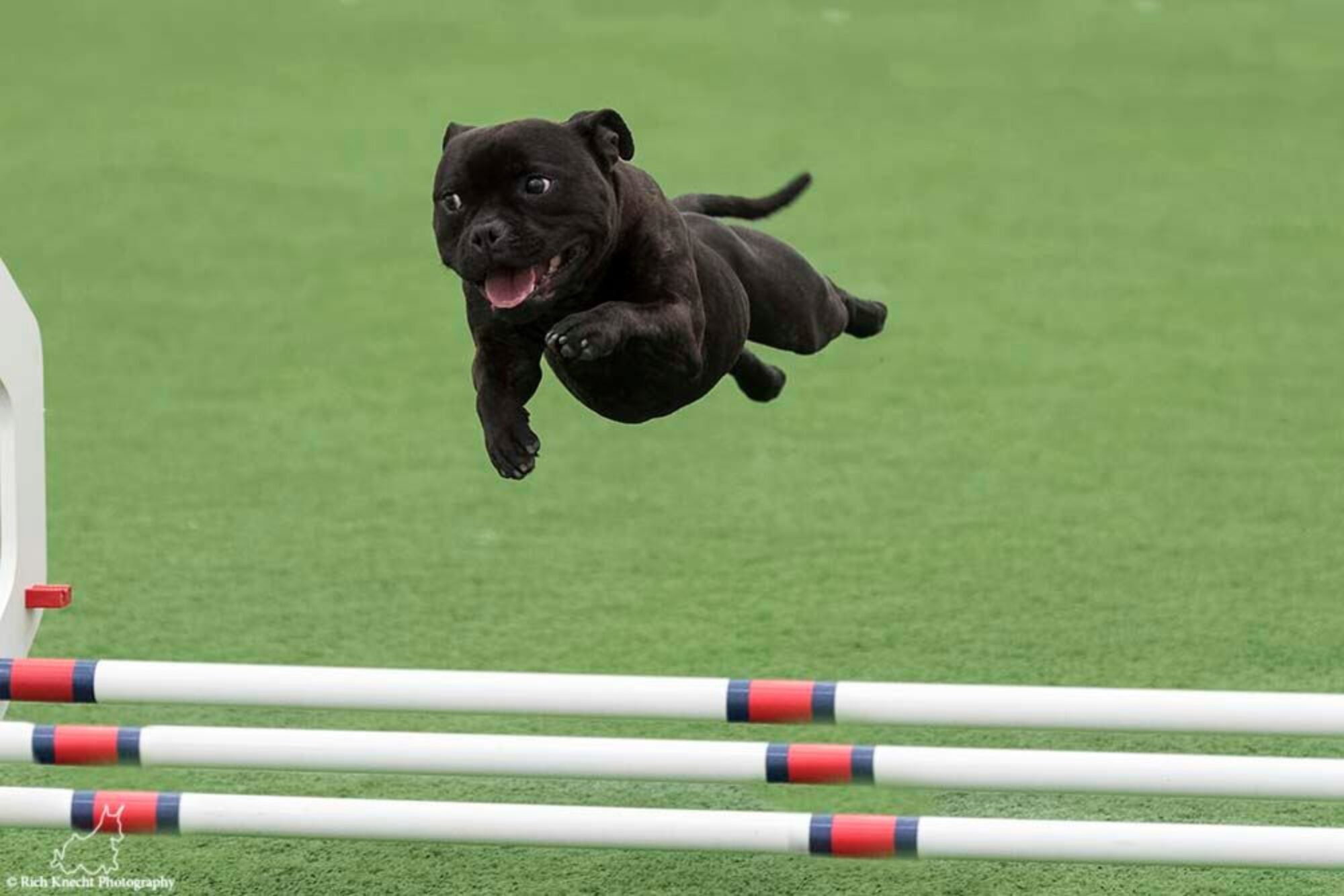We do not breed often. We do not show in conformation as often as we used to. We mainly travel to the bigger specialty shows to show to breeder judges and breed specialists when possible. We also never require a puppy we sell to be shown. If we sell a show prospect, we may encourage the dog to be shown after full review between 10 months and 2 years. We always offer to show the dog ourselves and we offer to pay the expenses as well as mentor and teach ring procedures and handling skills. We help find classes and shows if the owner is interested. It’s not in our contract as mandatory.
That all being said the rings today are filled with pet quality Staffords. Yes, I said it. Many are thinking it but nobody speaks out. We must be choosier if we wish to truly be preserving the breed as we like to say we are. An American CH title means much less than it once did. It means so much more if the title is earned mainly from the large specialty shows. It means even more if ALL points earned are from breeder judges and specialists. And it means even more than that to me personally if the title is also earned from the BBE class at specialties, against a lot of competition.
So often today breeders require new owners to show their new puppy to its title under contract. This means some owners have the added expenses of paying handlers if they are not interested (or lack confidence) in doing it themselves. Staffords are paraded around rings 2-4 days a week for months on end in order to fulfill these contracts. This also means that oftentimes these dogs lack the temperaments, structure and type which makes a true Stafford champion. Once the title has been earned….well awarded….as earned means its deserving…then these contracts require the dogs to be bred and puppies often going back to (or names added as breeder/owner) the breeders. And the cycle begins again . . .
How on earth do people NOT see how this is damaging the breed, not helping it?! How can they get on FB and watch a live video each week and see all the out of balance, soft toplines, low on leg, overweight, out of condition, roach, no breed type, terrified, timid, sad or out of control dogs being strung up and sculpted into position to win that ribbon? Seriously? How can you not see this is a farce? And now AKC judges see so many of this type they think it’s correct. You cant even have a conversation with many of them these days to help them see the error of their ways. You cant even offer them a copy of the SBTCA Illustrated Breed Standard or the TSK Illustrated Breed Standard because they think they know all there is to know about this breed! How insulting!
Many of us have worked hard over many years to educate, learn, teach, read, study about the Staffordshire Bull Terrier. We live with them. We get hands on 100’s of them. We travel great distances to see as many as we can. We study pedigrees, we do rescue, we understand correct temperament, we own libraries filled with books on the breed. We live and breathe Staffordshire Bull Terriers . . . and yet the arrogance of some judges (and handlers) sadly now shapes the future of this breed.
Sad. Pathetic. Shameful.


